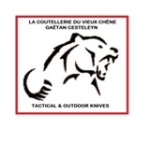WHAT'S ON THE BENCH...by Véro
Re: WHAT'S ON THE BENCH...by Véro
Un perfectionisme sublime, une maitrise incroyable.
- deovolens
- XX Hell
- Messages: 6721
- Inscrit le: 17 Sep 2007 21:23
- Localisation: Belgique
Re: WHAT'S ON THE BENCH...by Véro
Ca va vite devenir emmerdant si il n'y a rien au dessus de MS...


-

Hubert T. - yé crie ton nom
- Messages: 15676
- Inscrit le: 26 Jan 2013 01:22
Re: WHAT'S ON THE BENCH...by Véro
Félicitation pour son titre!!! C'est sacrément mérité , et quand on voit le boulot sur ses réalisations.….. 

-

NicolasW - panne ou plat ?
- Messages: 3671
- Inscrit le: 23 Déc 2010 10:34
- Localisation: Elsass
Re: WHAT'S ON THE BENCH...by Véro
Hubert T. a écrit:Ca va vite devenir emmerdant si il n'y a rien au dessus de MS...
Si !
Présidente de l'ABS !


Un peu comme si Angela Merkel devenait Prèsidents des USA …

Mais elle le mériterait, non ? (Pas Angela, hé ! Véro !)
Que la forge soit avec vous ! Moi, j'en ai plus...
M'en vais créer un club de gauchers, moi !!! Grrrr...
M'en vais créer un club de gauchers, moi !!! Grrrr...
-

Der Alte - Gemblues
- Messages: 3300
- Inscrit le: 28 Jan 2007 22:15
- Localisation: Geel / Belgique
Re: WHAT'S ON THE BENCH...by Véro
c'est le 1er fois que je vois Jean Louis avec des chaussures 

Salutations LCDVC
mon blog http://lacoutellerieduvieuxchene.blogspot.fr/.
Visitez ma page Facebook: www.facebook.com/LCDVC
mon blog http://lacoutellerieduvieuxchene.blogspot.fr/.
Visitez ma page Facebook: www.facebook.com/LCDVC
-

GC - Célestin
- Messages: 3697
- Inscrit le: 28 Juin 2007 09:40
Re: WHAT'S ON THE BENCH...by Véro
Nan mais à l'intérieur des chaussures il porte des tongs 

-

G-M - honky Tonc-man
- Messages: 24544
- Inscrit le: 28 Aoû 2012 07:52
- Localisation: Jean Paul Sarthe
Re: WHAT'S ON THE BENCH...by Véro
superbe et félicitation à Vero, beaucoup de travail et de persévérance récompensé !
Salutations LCDVC
mon blog http://lacoutellerieduvieuxchene.blogspot.fr/.
Visitez ma page Facebook: www.facebook.com/LCDVC
mon blog http://lacoutellerieduvieuxchene.blogspot.fr/.
Visitez ma page Facebook: www.facebook.com/LCDVC
-

GC - Célestin
- Messages: 3697
- Inscrit le: 28 Juin 2007 09:40
Re: WHAT'S ON THE BENCH...by Véro

Ah la forge de Marcinelle: Fabian, Oufti, Remy, Achim et une rare fille forgeron(ne) notre Véro bien aimée
Les règles pour un art dagger etc
Art Dagger (Required piece)
1. The applicant must provide for review a knife in the form of a European Quillon Dagger. The guard of the dagger must be a quillon guard, similar to those found on European daggers in the middle to late middle ages. Quillons are lugs or extensions which extend outward from the center of the knife, and may be forged or turned. They must be even, symmetrical, and pleasing in appearance. Flat round guards or oval guards do not qualify.
2. The blade of this dagger must be forged of pattern-welded Damascus steel of the applicant's making. It must also be:
A. Of at least 300 layers in construction. Should the applicant make a mosaic or geometrically patterned blade, at least one area should readily be identified as having 300 layers.
B. A minimum of 10 inches in length, guard to tip.
C. Ground in either a double flat grind (diamond cross-section) or double hollow-ground.
Naturally, the blade must be straight, symmetrical, and contain no flaws or cold shuts. After all, this literally is your masterpiece! Twists, ladder patterns and mosaic patterns are all encouraged, but be sure that there is at least one section visible which the judges can ascertain that the blade meets the 300-layer minimum.
3. The handle also has some requirements. Its length should be appropriate for the blade, and I recommend that you make it of the very best materials you can afford. A word of advice: do not use synthetic materials on the handle of this knife or cut corners in materials. The use of brass furniture and/or copper electrical wire on this handle will get a lot of frowns from the judges. The more salient requirements are as follows:
The handle must be inlaid with a twisted wire wrap, set to a depth of one half its (the twisted wire's) diameter. The handle must also be fluted for most of its length between the strands of twisted wire. The strands of twisted wire must show the same degree of twist for all. Flutes should be crisp, distinct, and well-finished. The spacing and depth for wires and flutes must also be even and uniform.
Most people spiral the flutes and wire around the handle. This was commonly done in the "old days" and it helped with the grip and it also helped hold the wire in place tightly. The wire is not to be glued to the handle and must stay firmly in place, though the hidden ends of the wire can certainly be anchored in any appropriate manner. Although the wires will necessarily terminate beneath the metal furniture at either end of the handle, be sure the flutes stop short of the ends, and do not leave a sharp metal overhang where the flutes meet the guard, pommel, or spacers.
The rules currently do not specify that the wire and flutes must be spiraled around the handle and we do see some with the wire/flutes running parallel with the handle. If you do opt for the straight design for your wire and flutes, it will help if the handle has some swell in the center and tapers to the ends. Wire is difficult to keep in place, otherwise, and the use of something shaped like a mop handle won't meet with much approval. With either method, I recommend a minimum of four strands of twisted wire, with appropriate flutes between.
Your "sword-hilted dagger" as they are sometimes called, must be symmetrical, straight, and of solid construction. One term I have heard and adopted to describe a good solid dagger design is "weapons grade." This doesn't mean it needs to be a real heavyweight; it just needs to be a well-executed design which would have been suitable for practical use during the period they were carried. Engraving, bluing, browning, filework, etc. is allowed, but not required. It is required that any and all work done on your knives be done by you and only you. Remember also that any embellishments must be of Master quality. The byword here is clean.
- deovolens
- XX Hell
- Messages: 6721
- Inscrit le: 17 Sep 2007 21:23
- Localisation: Belgique
Re: WHAT'S ON THE BENCH...by Véro
Jolie photo !
Merci !
Tu as une idée de quand date le cliché ?
Merci !
Tu as une idée de quand date le cliché ?
c'est plus pas facile que c'est compliqué..
-

michelS - Mr. et Mrs. Smith
- Messages: 4266
- Inscrit le: 31 Aoû 2007 23:57
- Localisation: BRUXELLES
Re: WHAT'S ON THE BENCH...by Véro
En tous cas il y a 5 ans moins 2 jours...
 [/URL]
[/URL]
Bon appétit !
 [/URL]
[/URL]Bon appétit !
c'est plus pas facile que c'est compliqué..
-

michelS - Mr. et Mrs. Smith
- Messages: 4266
- Inscrit le: 31 Aoû 2007 23:57
- Localisation: BRUXELLES
Re: WHAT'S ON THE BENCH...by Véro
J'ai une question con, après les ficelles de caleçon de rigueur (mon dieu cette dague, quelle splendeur !!!)
Ca veut dire quoi MS ? J'imagine que le M doit vouloir dire Master, sans doute, mais le S... ?
Ca veut dire quoi MS ? J'imagine que le M doit vouloir dire Master, sans doute, mais le S... ?
En fait, je crois bien que finalement, je cherche un Bugiste...
-

Le Güi - Messages: 1136
- Inscrit le: 30 Aoû 2014 21:29
Qui est en ligne ?
Utilisateurs parcourant actuellement ce forum : Bushman07, Google [Bot] et 4 invités


 рганизация
рганизация